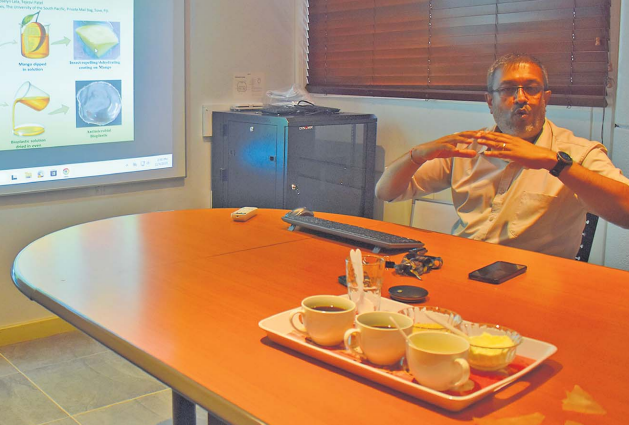RESEARCHERS from the University of the South Pacific have made a major breakthrough, poised to transform global food packaging.
Led by Associate Professor David Rohindra from the Discipline of Chemistry, the team has created edible and biodegradable food coatings and wrappers using cassava starch, agar, glycerol, and plant-based essential oils.
This innovation in sustainable food packaging has the potential to revolutionise food preservation and packaging worldwide, while positioning Fiji as a future leader in eco-friendly exports.
The new cassava-based coating helps preserve fruits such as mangoes by reducing spoilage caused by fruit flies.
It works in two main ways — it speeds up drying through osmosis, and the clove oil in it stops fruit flies from laying eggs.
“This dual action functionality makes the coating especially effective for tropical produce, which often suffers from short shelf life and transport limitations,” said Associate Prof Rohindra.
He explained that cassava was common across the Pacific and that its starch has “excellent film-forming properties”.
By modifying cassava starch, the team has created a material that is “safe to consume, environmentally sustainable, and commercially viable”.
The team believes this innovation could also help Fiji’s economy.
“The economic implications for Fiji are significant.
“With global demand for sustainable packaging on the rise, cassava-based wrappers could become a major export product.
“It’s not just about science, it’s about job creation, export growth, and leading the world in green innovation.”
The research team said the project showed how Pacific nations can lead in sustainability.
“As the world confronts the twin crisis of plastic pollution and food waste, Fiji’s cassava-powered innovation offers a compelling model for sustainable development.”
By combining science with local resources, the cassava wrapper shows that small island nations can create real global change.
“With the right investment and policy support, this edible wrapper could soon be protecting your groceries and protecting the planet.”



